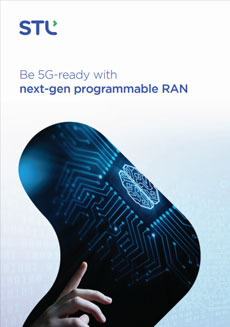Be 5G-ready with next-gen programmable RAN
The exponential increase in mobile traffic just compounds the complexity posed by legacy networks. Networks of the future must become software-driven, virtualised, flexible and intelligent to tap the potential of 5G and IoT. With the added complexity of digitalisation that most network service providers face today, it is evident to see a surge in interest of programmable and virtualised networks. This is a natural progression since programmability radically increases the ability to launch innovative services with a high level of agility while also allowing to monetise new services with a level of speed not possible with legacy network infrastructure.
To achieve 5G roll outs on a large scale, it seems necessary to adopt a flexible, open framework. To bolster this STL has developed Programmable, Open and Disaggregated Solutions (PODS) through combined efforts of the open community, the organisation and its partners
PODS makes networking more flexible, open, programmable and simplified. pRAN (programmable RAN) adopts the same philosophy and presents STL’s unique solution for RAN virtualisation. pRAN is a SDN- NFV- and cloud-based radio access network solution to help service providers create an Open, Disaggregated and Virtualized 5GC solution aligned with 3GPP. It helps in disaggregating RAN, virtualise its components, realize virtualised components in the edge cloud and SDNise it for programmability.



